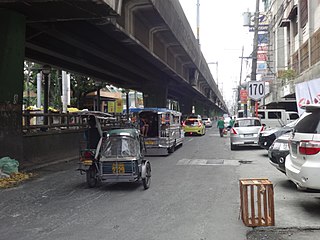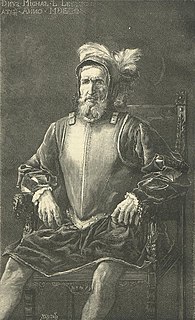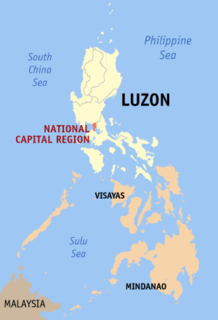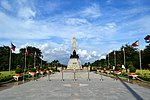| Plaza de Mexico | |
|---|---|
| Public square | |
The statue of Adolfo López Mateos at Plaza de Mexico | |
| Location: | Magallanes Drive, Intramuros Manila, Philippines |
| Coordinates: 14°35′39″N120°58′28″E / 14.59417°N 120.97444°E Coordinates: 14°35′39″N120°58′28″E / 14.59417°N 120.97444°E | |
Plaza de Mexico, also known simply as Plaza Mexico, is a historic riverside square in Manila, Philippines, located at the west end of Magallanes Drive and Riverside Drive in Intramuros bordering the Pasig River in the north. It is surrounded by the Aduana Building on the south, the Bureau of Immigration Building on the east and the ruins of the Bastión de Maestranza and Puerta de Almacenes on the west. The Pasig River Ferry has a station also named Plaza Mexico located northeast of the square behind the Immigration building. The square was named Plaza de Mexico in 1964 to commemorate the 4th centenary of the expedition of Miguel López de Legazpi and Andres de Urdaneta from New Spain (Mexico) and the historic Manila-Acapulco galleon trade relations between the two nations that lasted 250 years.

Manila, officially the City of Manila, is the capital of the Philippines. It is the most densely populated city proper in the world. It was the first chartered city by virtue of the Philippine Commission Act 183 on July 31, 1901 and gained autonomy with the passage of Republic Act No. 409 or the "Revised Charter of the City of Manila" on June 18, 1949. Manila, alongside Mexico and Madrid are considered the world's original set of Global Cities due to Manila's commercial networks being the first to traverse the Pacific Ocean, thus connecting Spanish Asia with the Spanish Americas, marking the first time in world history when an uninterrupted chain of trade routes circled the planet. Manila has been damaged by and rebuilt from wars more times than the famed city of Troy and it is also the second most natural disaster afflicted capital city in the world next to Tokyo yet it is simultaneously among the most populous and most wealthy cities in Southeast Asia.

The Philippines, officially the Republic of the Philippines, is an archipelagic country in Southeast Asia. Situated in the western Pacific Ocean, it consists of about 7,641 islands that are categorized broadly under three main geographical divisions from north to south: Luzon, Visayas, and Mindanao. The capital city of the Philippines is Manila and the most populous city is Quezon City, both part of Metro Manila. Bounded by the South China Sea on the west, the Philippine Sea on the east and the Celebes Sea on the southwest, the Philippines shares maritime borders with Taiwan to the north, Vietnam to the west, Palau to the east, and Malaysia and Indonesia to the south.

Intramuros is the 0.67 square kilometres (0.26 sq mi) historic walled area within the modern city of Manila, the capital of the Philippines. It is administered by the Intramuros Administration (IA), which was created through the Presidential Decree No. 1616 signed on April 10, 1979. IA is tasked to rebuild, redevelop, administer and preserve the remaining pre-war buildings, structures and fortifications of Intramuros.
Contents
Located on this square is the monument to the IV Centenary of the Mexico–Philippines Maritime Expedition donated by the Mexican Secretary of The Navy Shipyards during the celebrations of the Year of Mexican-Philippine Friendship in 1964. On the other side of the square is a statue of Adolfo López Mateos, the President of Mexico who visited the city in 1962. [1]
The Astilleros de la Secretaría de Marina, are also known as ASTIMAR. The yards are dependent on the Mexican General Directorate of Naval Construction of the Mexican Navy, which carries out various types of naval construction and repairs in the Mexican territory.

Adolfo López Mateos was a Mexican politician who became a member of the Institutional Revolutionary Party (PRI), after earlier opposing its precursor in 1929. He was elected President of Mexico, serving from 1958 to 1964.
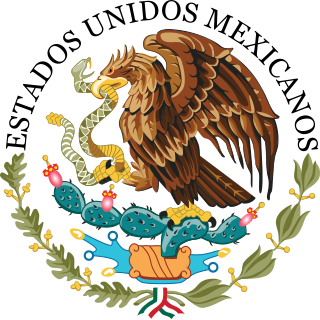
The President of Mexico, officially known as the President of the United Mexican States, is the head of state and government of Mexico. Under the Constitution, the president is also the Supreme Commander of the Mexican armed forces. The current President is Andrés Manuel López Obrador, who took office on December 1, 2018.



